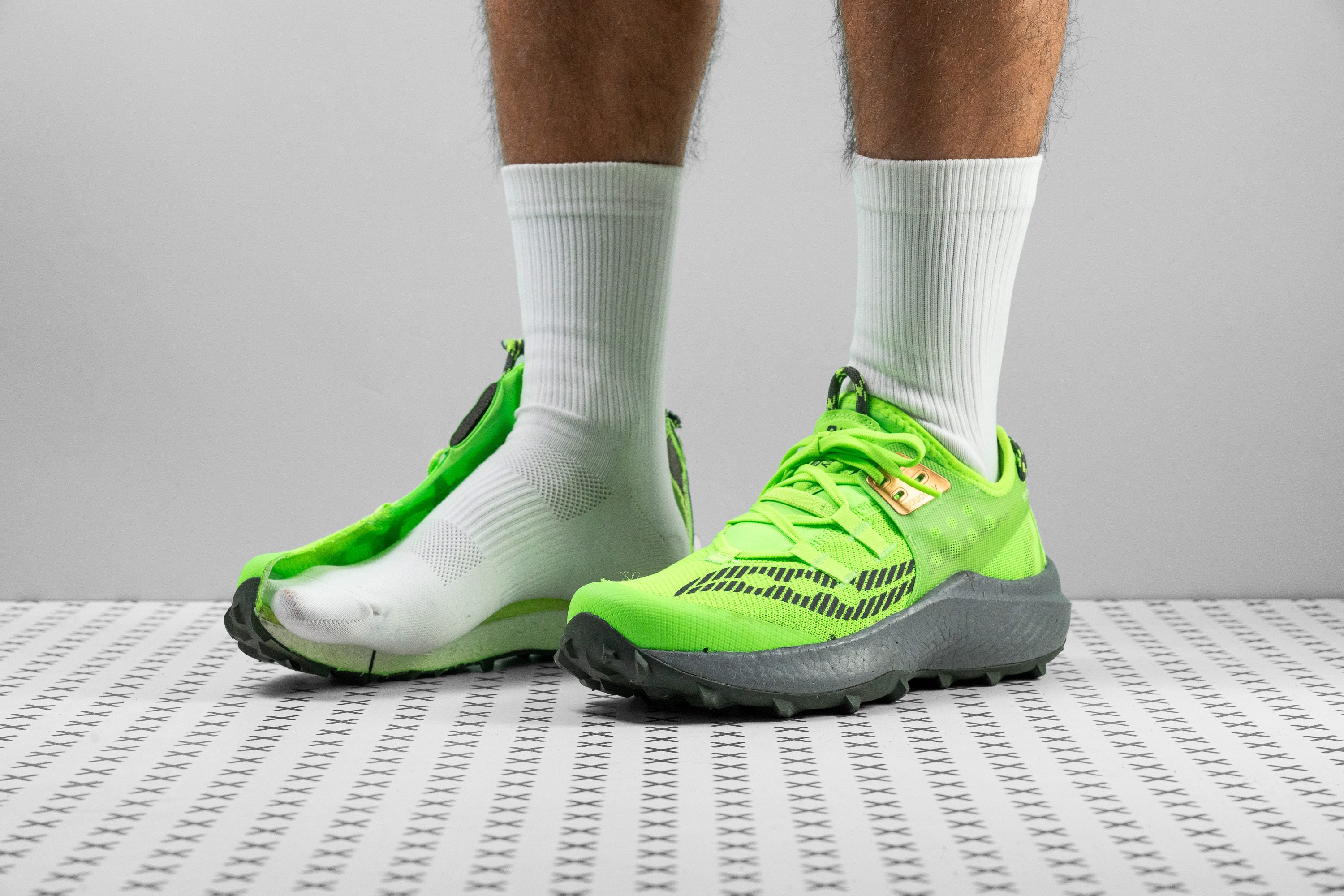Our verdict
- Top pick in best Saucony trail running shoes
Pros
- Fantastic PWRRUN PB midsole technology
- Ideal for summer runs due to its breathable upper
- Capable of handling muddy terrain with ease
- Upper and outsole showcase incredible durability
- Sufficiently cushioned for ultra-marathons
- Exceptional cushion-to-weight ratio
- Sock-like upper provides a fantastic fit
- Excellent heel lockdown
- Handles faster paces effortlessly
Cons
- Tongue design needs enhancement for ultras
- Lugs could be slightly shorter
- Price point is probably too high for some budgets
Audience verdict
Comparison
The most similar running shoes compared
+ + Add a shoe | |||||
|---|---|---|---|---|---|
| Audience score | 85 Good! | 78 Decent! | 87 Great! | 90 Great! | |
| Price | £180 | £140 | £140 | £135 | |
| Trail terrain | Technical | Moderate | Light | ModerateTechnical | |
| Shock absorption | - | Moderate | - | - | |
| Energy return | - | Low | - | - | |
| Arch support | Neutral | Neutral | Neutral | Neutral | |
| Weight lab Weight brand | 9 oz / 255g 9.1 oz / 258g | 9.8 oz / 278g 9.8 oz / 277g | 9.9 oz / 281g 9.9 oz / 280g | 10.2 oz / 288g 10.1 oz / 286g | |
| Drop lab Drop brand | 7.9 mm 6.0 mm | 4.9 mm 5.0 mm | 7.2 mm 6.0 mm | 4.4 mm 3.0 mm | |
| Strike pattern | Mid/forefoot | Mid/forefoot | Mid/forefoot | Mid/forefoot | |
| Size | True to size | Slightly small | True to size | True to size | |
| Midsole softness | Soft | Balanced | Soft | Soft | |
| Difference in midsole softness in cold | Small | Small | Small | Normal | |
| Plate | Rock plate | ✗ | Rock plate | ✗ | |
| Toebox durability | Good | Good | Decent | Very good | |
| Heel padding durability | Good | Good | Good | Decent | |
| Outsole durability | Good | Decent | Good | - | |
| Breathability | Breathable | Warm | Moderate | Moderate | |
| Width / fit | Medium | Medium | Medium | Medium | |
| Toebox width | Medium | Medium | Medium | Medium | |
| Stiffness | Stiff | Stiff | Stiff | Stiff | |
| Torsional rigidity | Moderate | Stiff | Stiff | Moderate | |
| Heel counter stiffness | Moderate | Moderate | Moderate | Moderate | |
| Lug depth | 4.5 mm | 4.0 mm | 2.5 mm | 4.4 mm | |
| Heel stack lab Heel stack brand | 33.0 mm 34.0 mm | 32.1 mm 40.0 mm | 31.0 mm 32.6 mm | 30.1 mm 31.0 mm | |
| Forefoot lab Forefoot brand | 25.1 mm 28.0 mm | 27.2 mm 35.0 mm | 23.8 mm 26.6 mm | 25.7 mm 28.0 mm | |
| Widths available | Normal | NormalWide | Normal | Normal | |
| For heavy runners | ✗ | ✓ | ✗ | ✗ | |
| Season | SummerAll seasons | All seasons | All seasons | All seasons | |
| Removable insole | ✓ | ✓ | ✓ | ✓ | |
| Orthotic friendly | ✓ | ✓ | ✓ | ✓ | |
| Ranking | #227 Bottom 39% | #333 Bottom 11% | #152 Top 41% | #41 Top 11% | |
| Popularity | #320 Bottom 15% | #53 Top 15% | #299 Bottom 20% | #303 Bottom 19% |
Who should buy
We highly recommend the Saucony Endorphin Rift for:
- Runners accustomed to road shoes with Pebax-based premium midsoles, seeking a similar energy return on trails.
- Those with a flexible budget who desire a top-tier, all-around trail runner offering superb stability and a lightweight design.
- Lovers of Saucony's Speedroll technology who wish to enjoy that same fluid, rockered running experience on trail paths and gravel roads.

Who should NOT buy
The Endorphin Rift is great for long runs with its massive energy return, but if you're looking for the ultimate racing shoe for ultras, we'd lean towards the Nike Ultrafly. It also features a Pebax-based midsole, but combines it with a carbon plate and shorter, Vibram lugs for a faster, less muted ride.
We also think this is not the best option for winter trail running due to its highly breathable upper. If you're into running in snowy and cold conditions, there are better-suited shoes out there, like the Merrell Agility Peak 5 or the Salomon Speedcross 6.
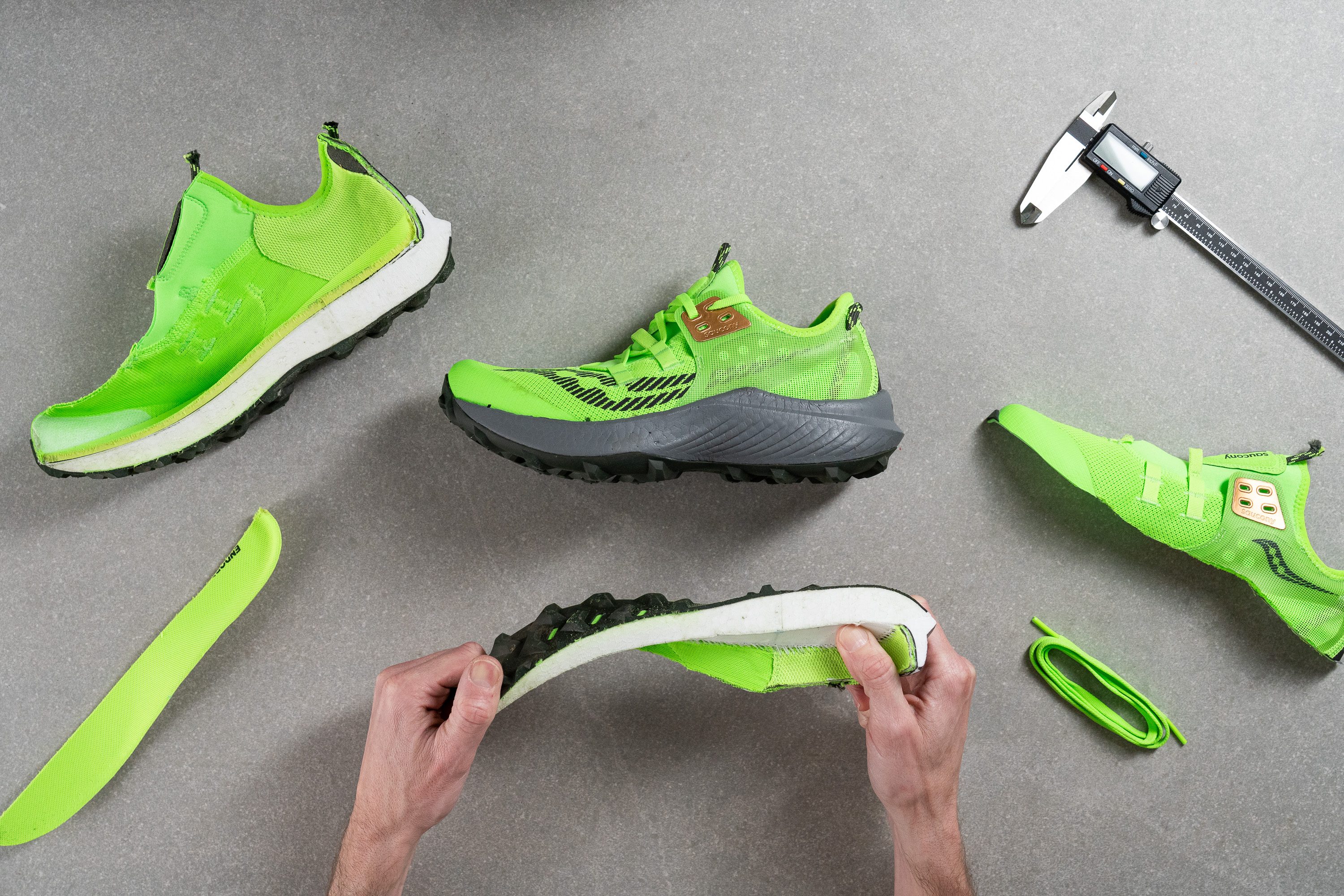
Cushioning
Heel stack
Some featherweight shoes reduce cushioning to become lighter, but that's not what happens with the Rift.

It offers a generous 33.0 mm of cushioning in the heel, striking a perfect balance. While it's not a maximal shoe, it's still great for long runs, even for rearfoot strikers.

| Endorphin Rift | 33.0 mm |
| Average | 32.6 mm |
Forefoot stack
The forefoot also has decent cushioning at 25.1 mm, which is plenty for long runs and even ultramarathons, especially for lighter runners.
Plus, this shoe features a premium midsole that offers far better leg-saving properties than the average EVA foam.
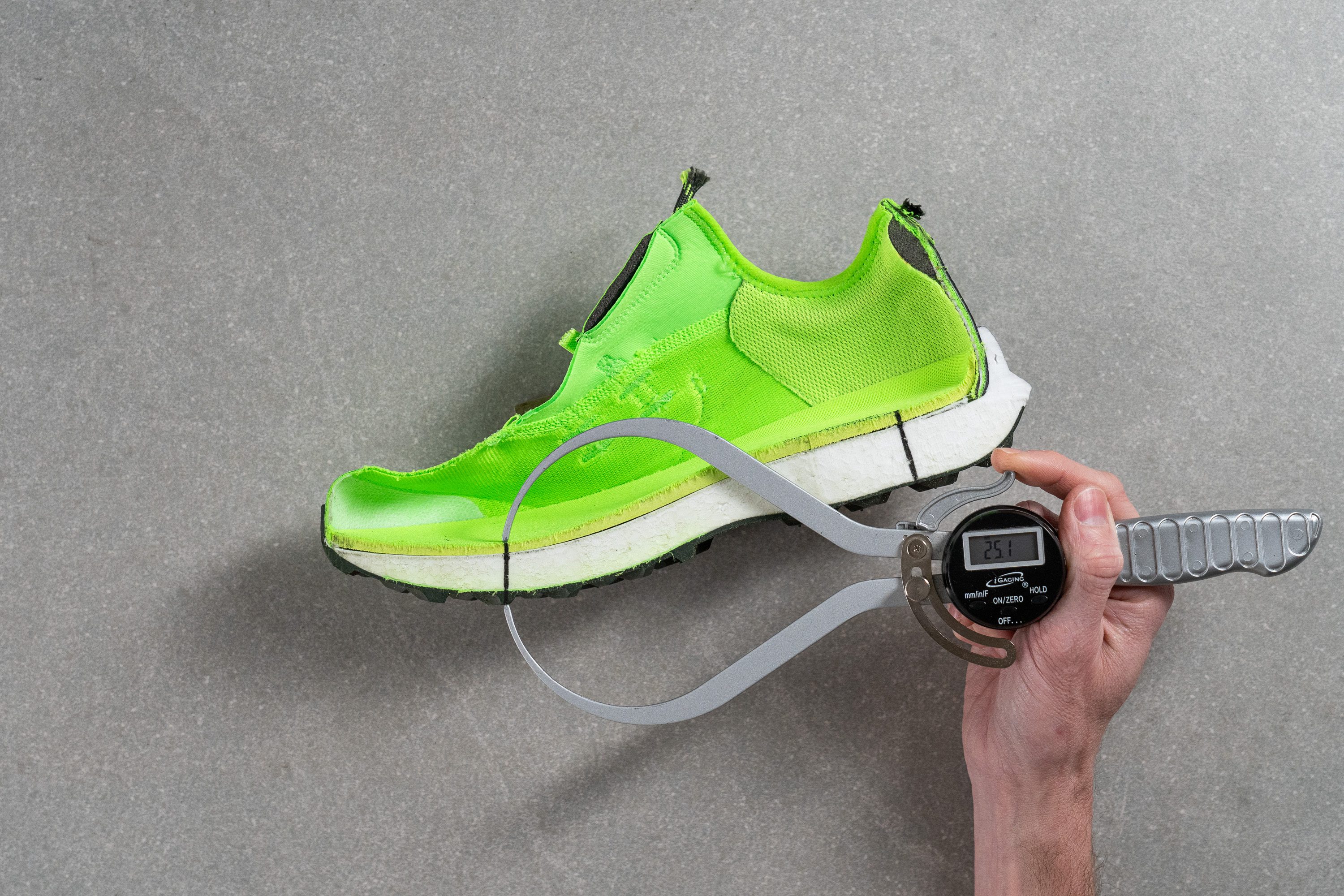
| Endorphin Rift | 25.1 mm |
| Average | 25.1 mm |
Drop
While Saucony's official spec sheet highlights a 6-mm offset for the Rift, our measurements—following the official guidelines—showed 7.9 mm, aligning with our experience while running.
This suggests that the shoe is better suited for easy trails or gravel roads, and not as much for technical terrain.
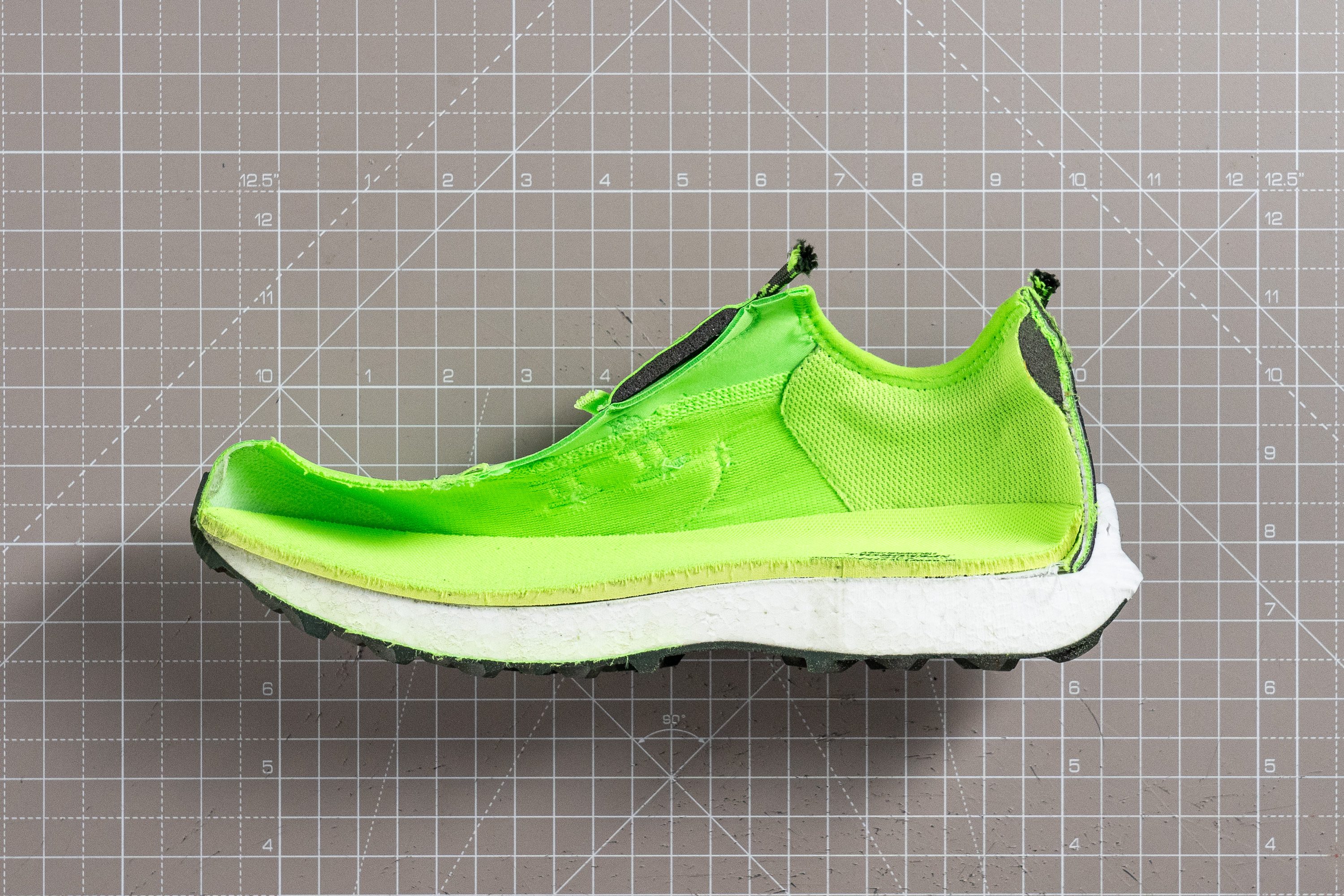
| Endorphin Rift | 7.9 mm |
| Average | 7.5 mm |
Midsole softness
The real showstopper here, with a nod to the breathable upper, is the midsole.
Why? Because the Endorphin Rift features the same midsole foam as Saucony's top-tier road running shoes, the Endorphin Speed 3 and the Endorphin Pro 3.
That's PWRRUN PB, a Pebax-based foam shaped into pellets, which has become a fan favourite in our lab for its exceptional lightness and energy return. We also like that it offers a perfectly balanced ride (19.4 HA) in terms of softness for the trails.
The foam is the main reason why we believe the shoe excels on flat, runnable terrain—it handles faster paces with ease. In our opinion, it's also a top pick for ultras, especially if you're not a fan of carbon plates, as the Rift includes just a protective, flexible rock plate.
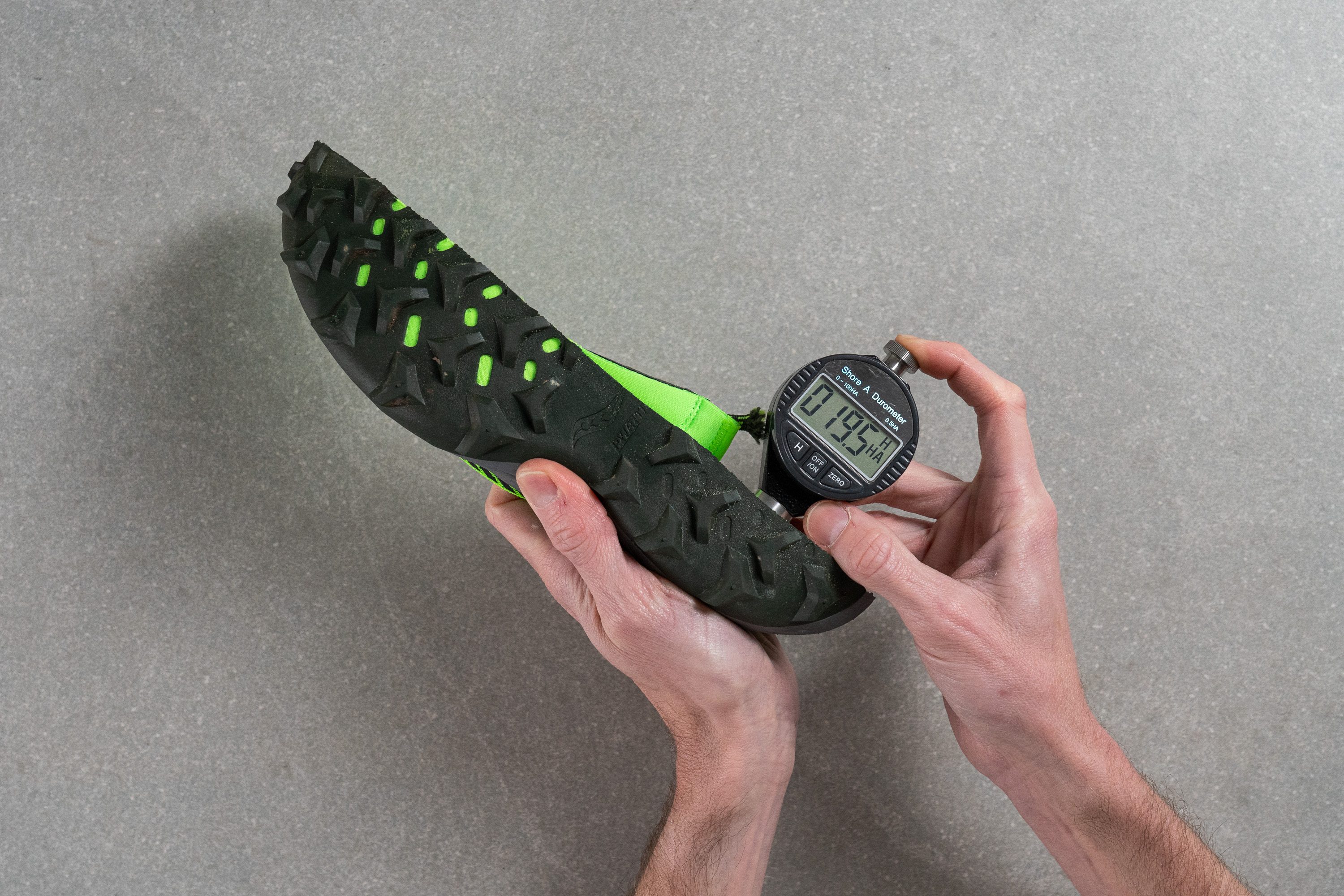
| Endorphin Rift | 19.4 HA |
| Average | 21.9 HA |
Rocker
Although the shoe doesn't appear highly rockered in the test, that's due to the lugs. If the sole were flat, it would have rocked forward and backward quite a bit, as it has a strong toe rocker.
In fact, it includes Saucony's Speedroll technology, which promotes forward motion at toe-off.
Size and fit
Size
Saucony Endorphin Rift fits true to size (18 votes).
Internal length
| Endorphin Rift | 264.5 mm |
| Average | 269.0 mm |
Width / Fit
Saucony had a great chance to create a roomy upper while maintaining great stability, and they nailed it. We measured the widest part at 97.9 mm.
While it's not the roomiest trail shoe out there, it's more accommodating than many other trail shoes, making it a good fit for those with somewhat wider feet. But if you have narrow feet, you can still make this shoe work by cinching down the laces.

| Endorphin Rift | 97.9 mm |
| Average | 95.6 mm |
Toebox width
The toebox feels more restrictive, measuring just 72.8 mm. While it should accommodate most narrow-to-average feet, a bit more room for toe splay would have been appreciated, especially for extended adventures.
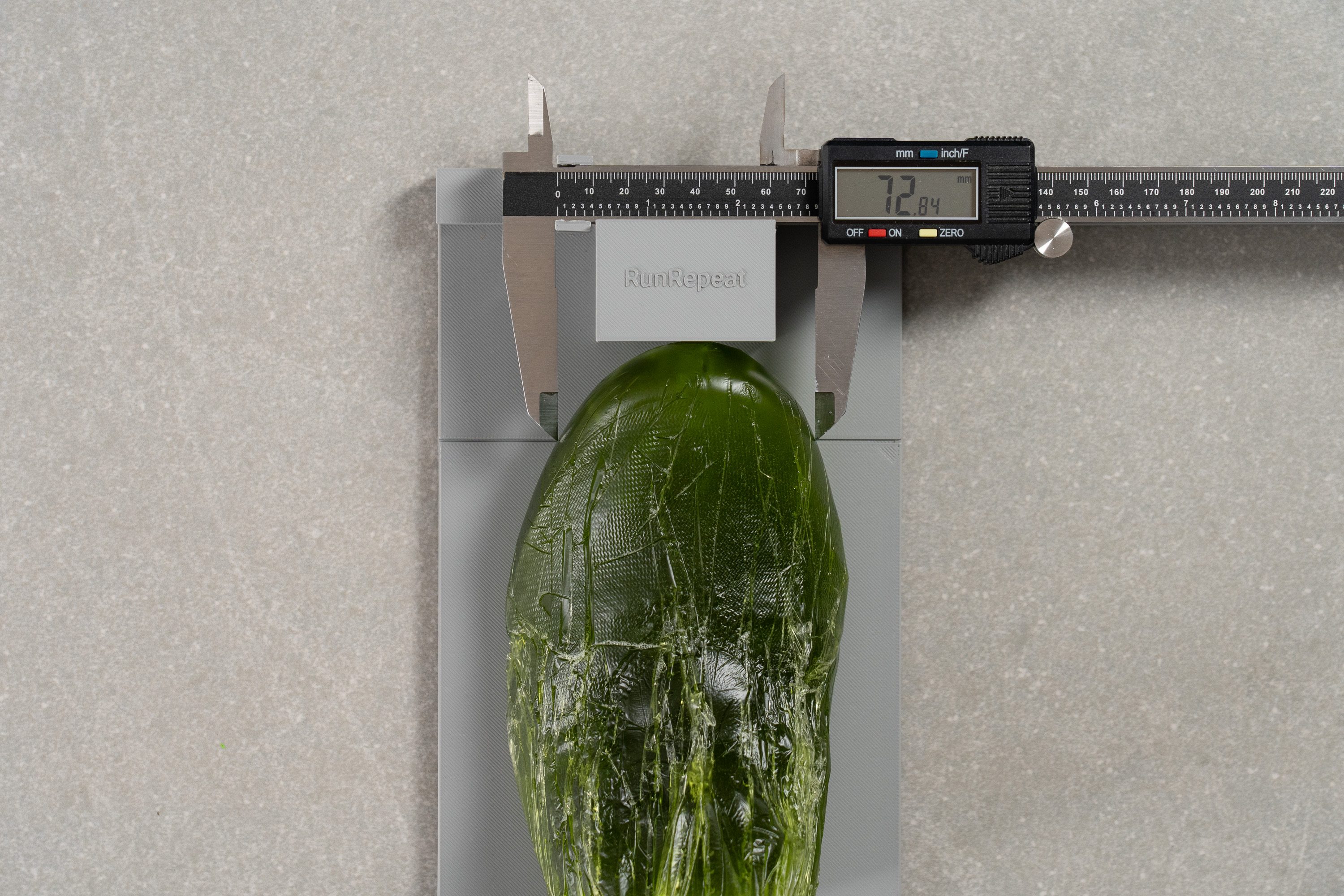
| Endorphin Rift | 72.8 mm |
| Average | 74.6 mm |
Toebox height
Through our evaluation, we also found that Saucony provided a remarkable 29.3 mm of height in the toe area—a measurement ideal for runners who value spacious vertical room.
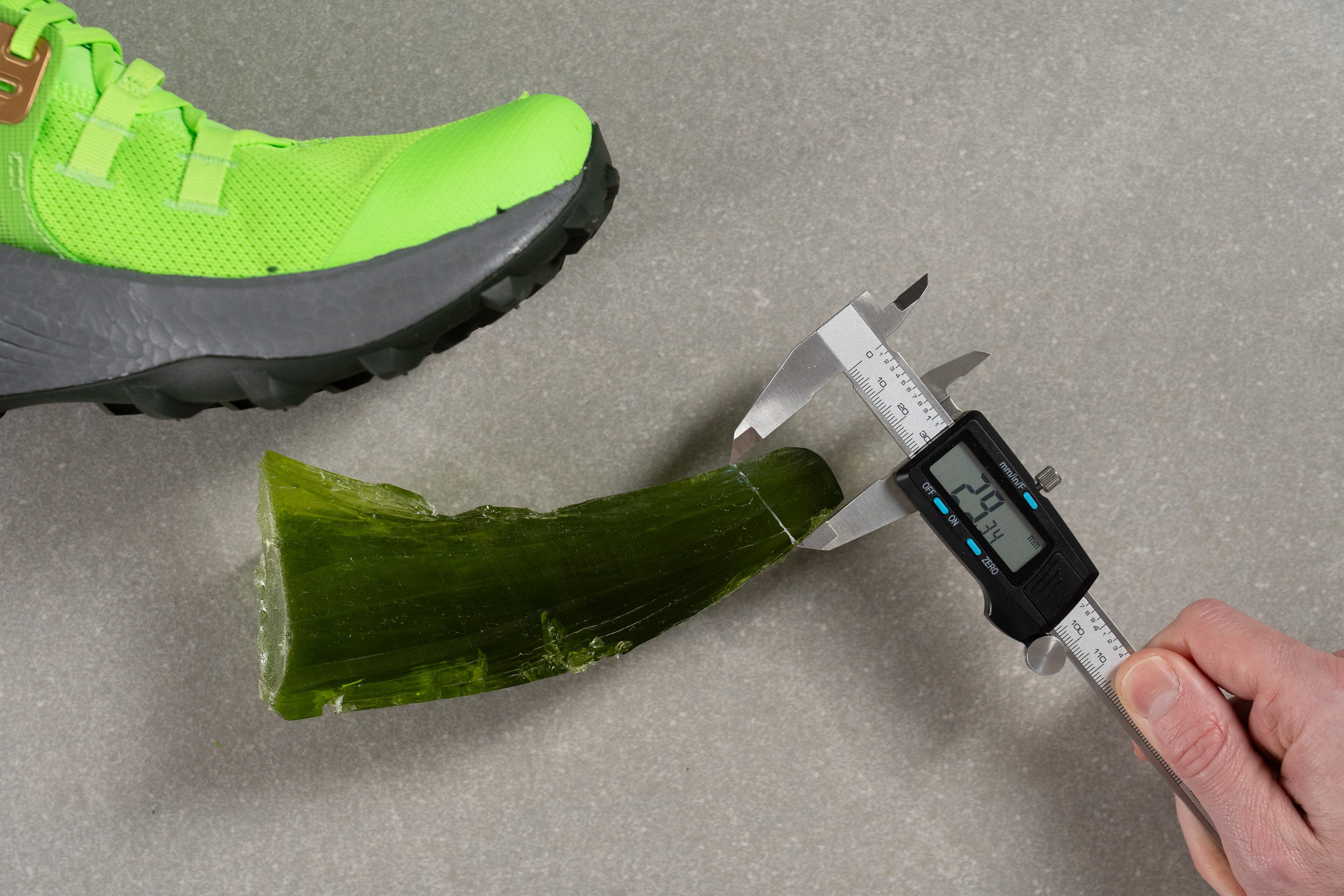
| Endorphin Rift | 29.3 mm |
| Average | 27.1 mm |
Traction / Grip
Lug depth
Returning to the outsole, our measurements showed the Rift's lugs are 4.5-mm long.
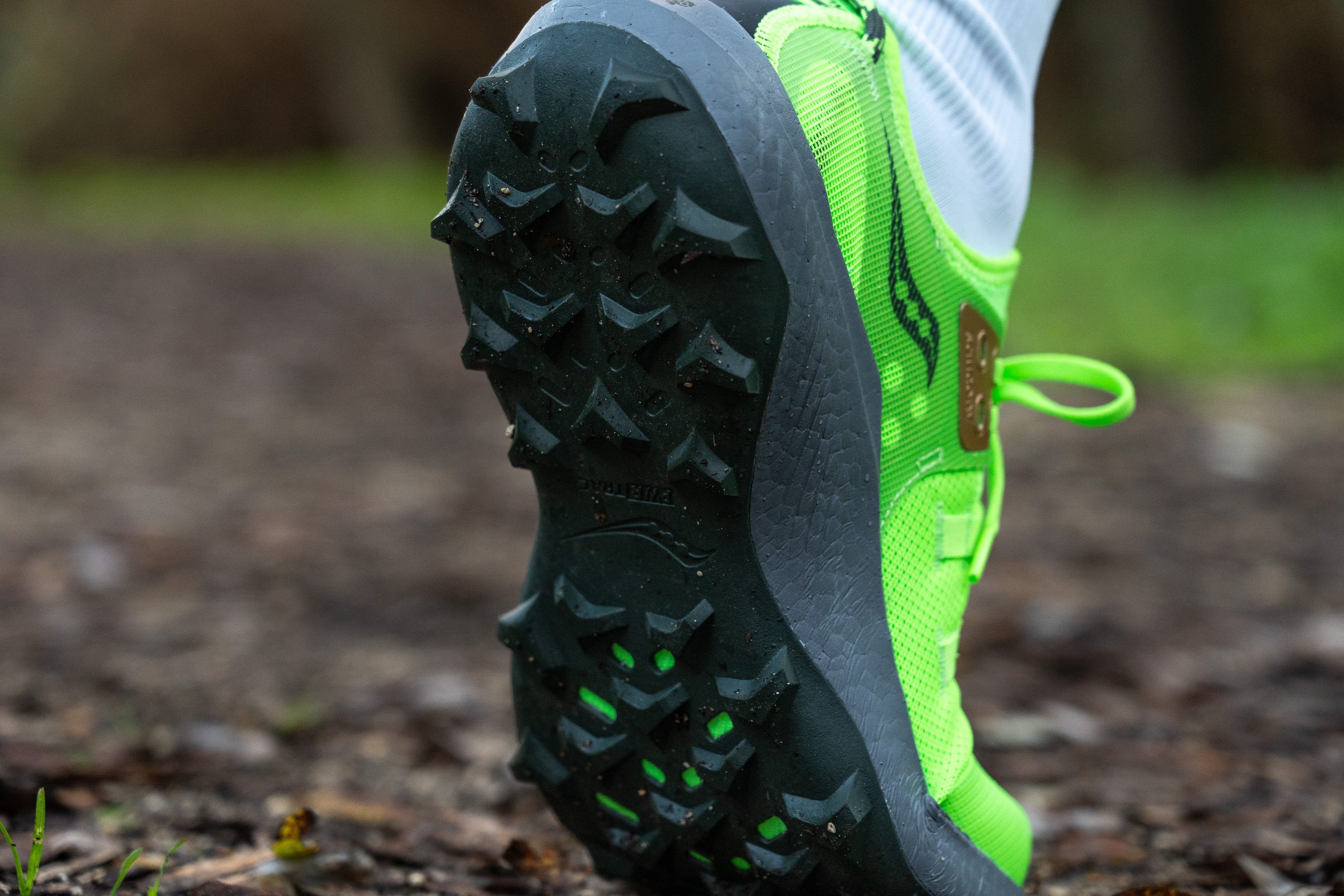
We think shorter lugs, around 3.0 or 3.5 mm, would have been better for a more fun and responsive ride on flat terrain. The current length, while advantageous in poor weather or muddy conditions, feels like a bit of an overkill.

The lugs feature a classic chevron pattern with varying angles for better traction and enough spacing for mud shedding.
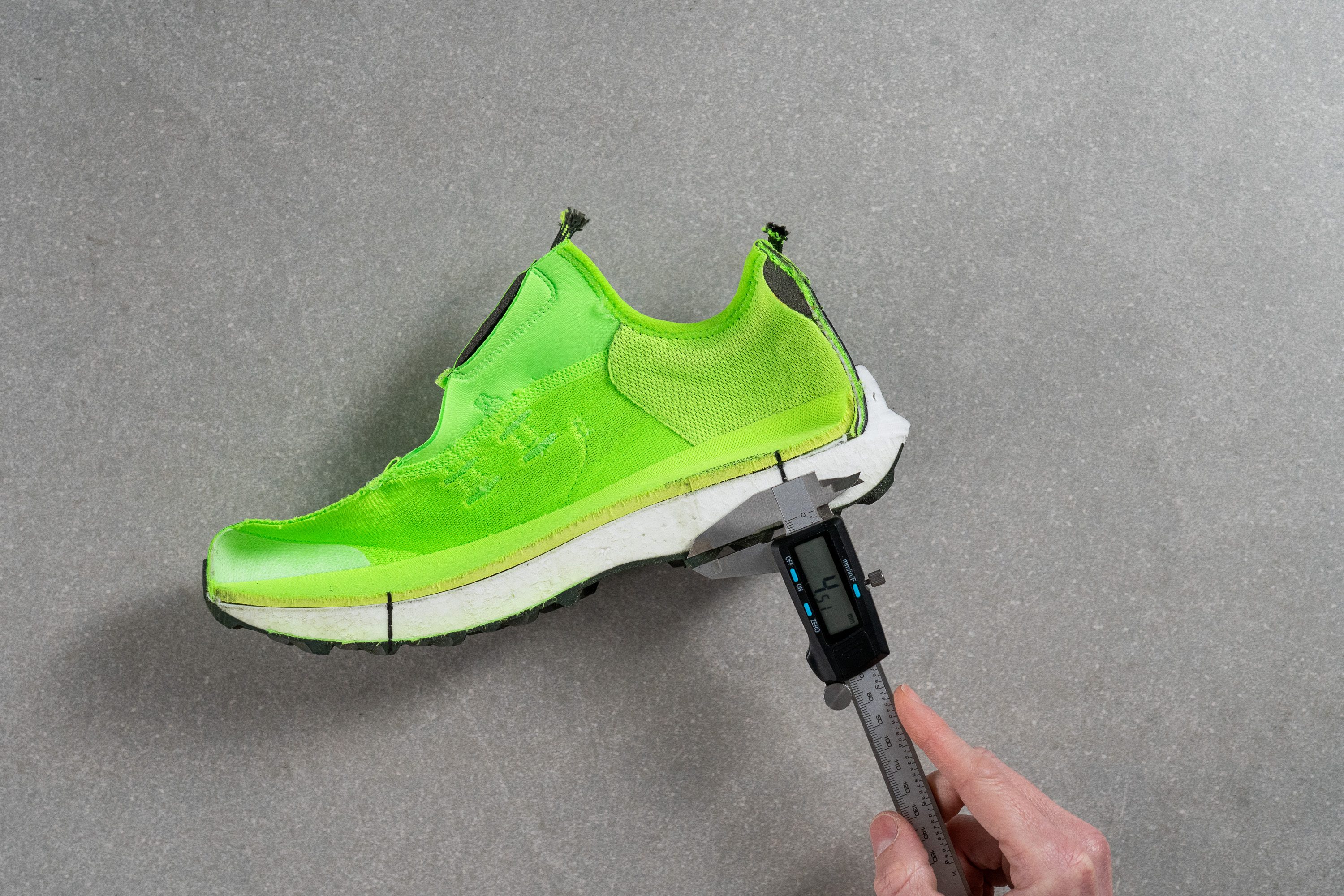
| Endorphin Rift | 4.5 mm |
| Average | 3.5 mm |
Flexibility / Stiffness
In our 90-degree, longitudinal stiffness test, we recorded a result of 26.3N, which made us really happy.
Although it includes a rock plate that's definitely noticeable in this test, overall, we found it quite flexible. We think it's a solid choice for days when you're mixing hiking and running for all-day adventures.
This test follows an older methodology, which is why you don't see recently tested shoes in the chart. Results from different methodologies can not be compared.
| Endorphin Rift | 26.3N |
| Average | 27.1N |
Stiffness in cold (%)
Thanks to the superb Pebax-based PWRRUN PB midsole, the performance in cold temperatures is incredibly impressive. It only became 4.4% stiffer when we repeated the same test after leaving it in the freezer for 20 minutes.
| Endorphin Rift | 4% |
| Average | 32% |
Weight
We've already mentioned how incredibly light this shoe feels, and now it's time to back it up with numbers.
Weighing in at just 9 oz (255g), there are hardly any trail running shoes that can match the Rift's lightness. Period.

| Endorphin Rift | 9.0 oz (255g) |
| Average | 10.2 oz (289g) |
Breathability
Trail shoes often struggle to match the breathability of their road-running counterparts, but the Rift is a delightful exception. We tested it with our smoke-pumping machine and awarded it a top-notch breathability score of 5 out of 5. Wow!
Initially, we weren't too hopeful, but in the end, we were pleasantly surprised with this upper. Saucony's choice to use a thin, light-test-approved mesh, riddled with mini-ventilation holes, really paid off.
Under the microscope, the engineered mesh revealed an array of mini-ventilation holes.
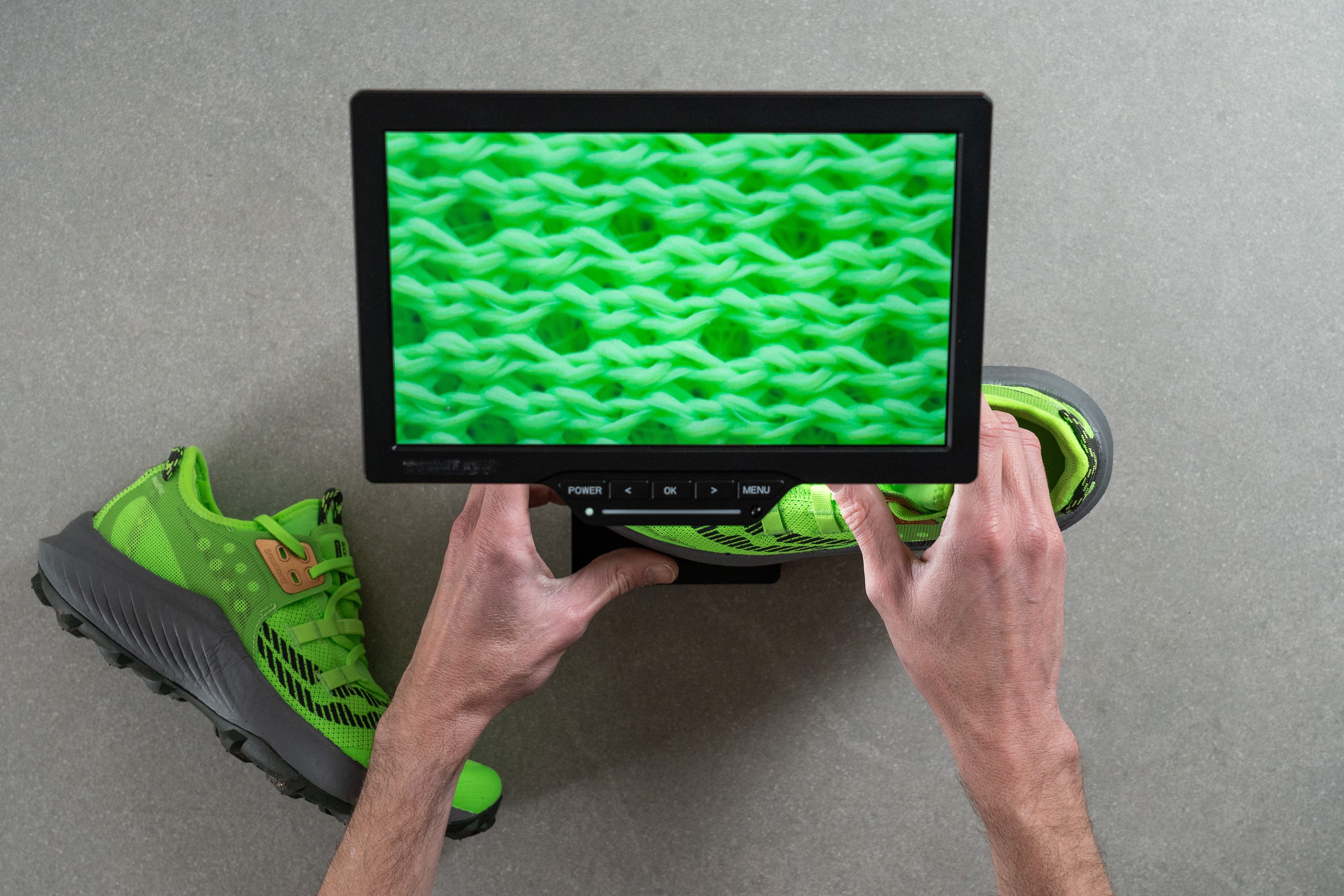
This strategy is not commonly seen, as it's simpler and more affordable to produce a standard mesh with larger holes. Saucony, however, took the more challenging route, and it paid off. This also explains why the shoe is priced in the higher end of the spectrum.
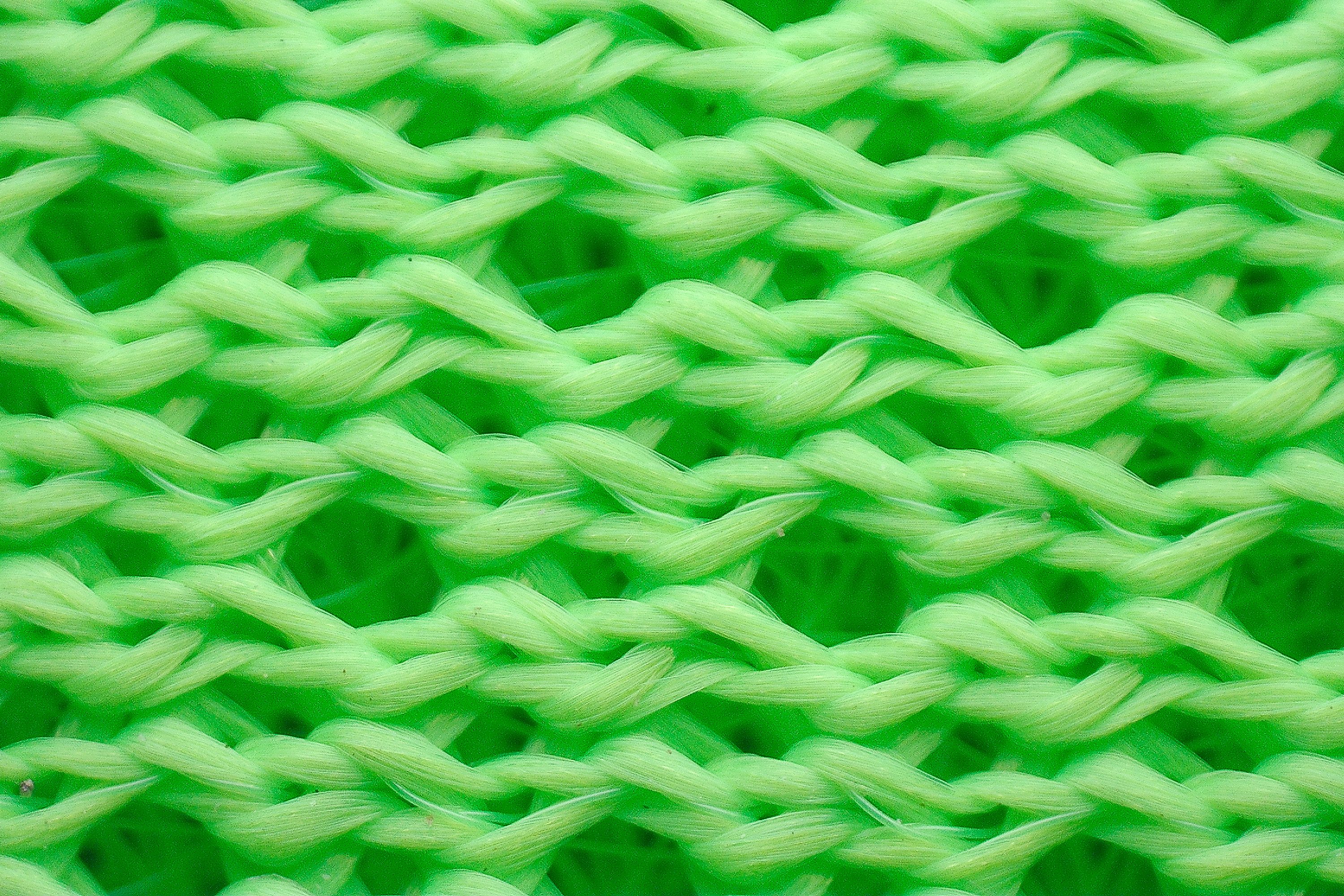
In our hands-on examination, the upper struck us as high-quality, though not excessively padded, and that could be a concern for some ultrarunners.
This aligns with our initial thoughts, as the shoe's light weight seems to be a key feature. We'll dive more into that in a minute!
| Endorphin Rift | 5 |
| Average | 3.2 |
Stability
Lateral stability test
The ride in the Rift is quite stable, thanks to midsole sidewalls paired with a large overlay integrated into the last eyelets that integrates with the heel counter.
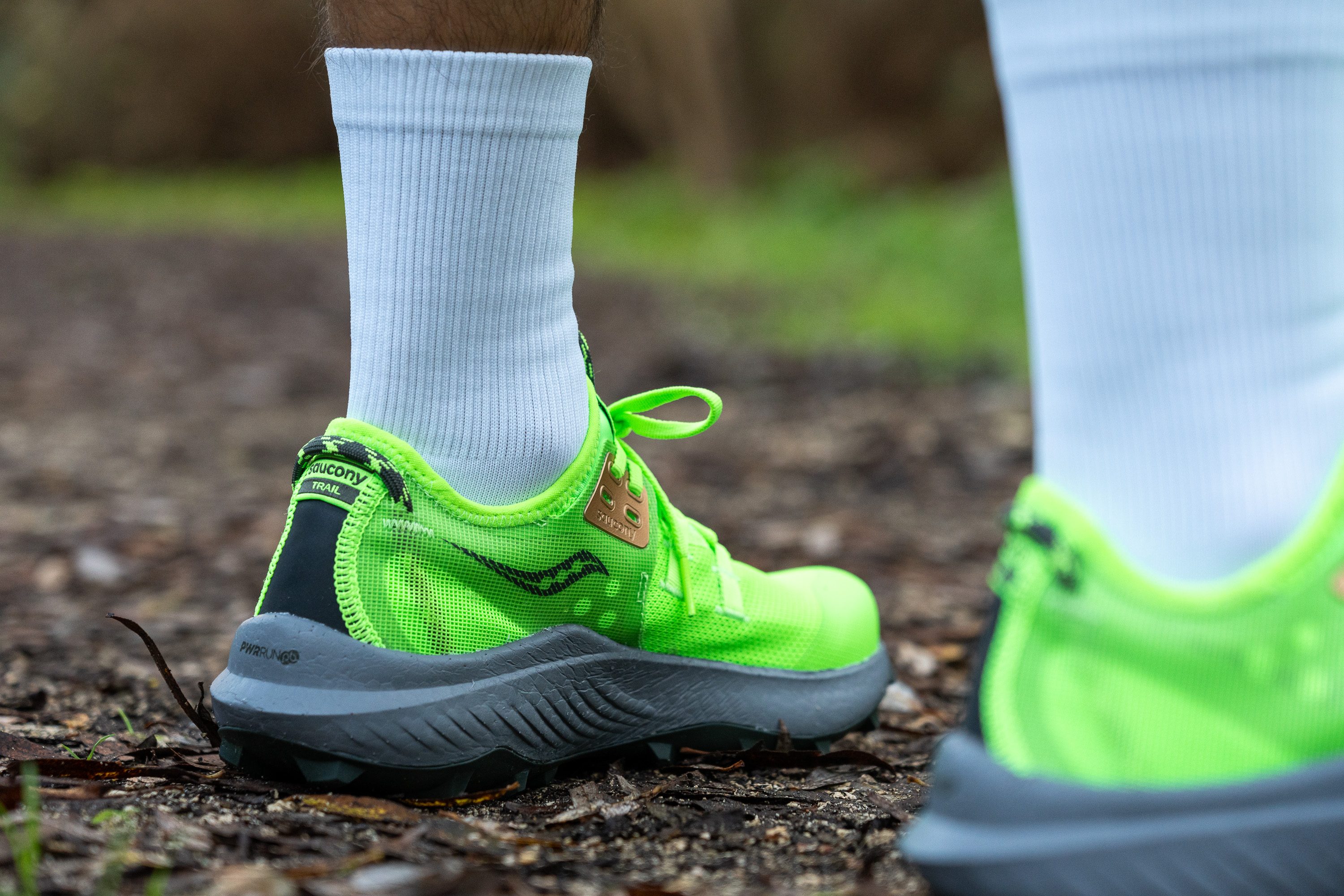
It's a unique design, but it works really well to enhance stability. Plus, the fact that it's not a maximally stacked shoe also contributes to its stability.
Torsional rigidity
The features we mentioned earlier are crucial to this shoe's design because they add just enough stability without making it too stiff, and it's definitely noticeable. The Rift is really comfortable for long runs.
That's why it only scored a 3 out of 5 in our torsional rigidity test. Of course, the absence of a carbon plate also played a part in this rating.
| Endorphin Rift | 3 |
| Average | 3.6 |
Heel counter stiffness
The heel counter is pretty standard, providing sufficient heel lock without being overly noticeable. We gave it a 3 out of 5 rating, similar to what we typically see in most trail shoes.
| Endorphin Rift | 3 |
| Average | 3 |
Midsole width - forefoot
We previously discussed how Saucony enhanced stability, particularly in the heel, by combining midsole sidewalls and lateral reinforcements. But what about the forefoot?
Good news—midfoot and forefoot strikers are well taken care of with the Rift. With a width of 119.1 mm, this shoe offers a broad landing platform that significantly boosts stability for both running techniques.
Sure, it might feel a bit clunky while taking turns on super-steep descents, but we believe the trade-off is absolutely worth it!
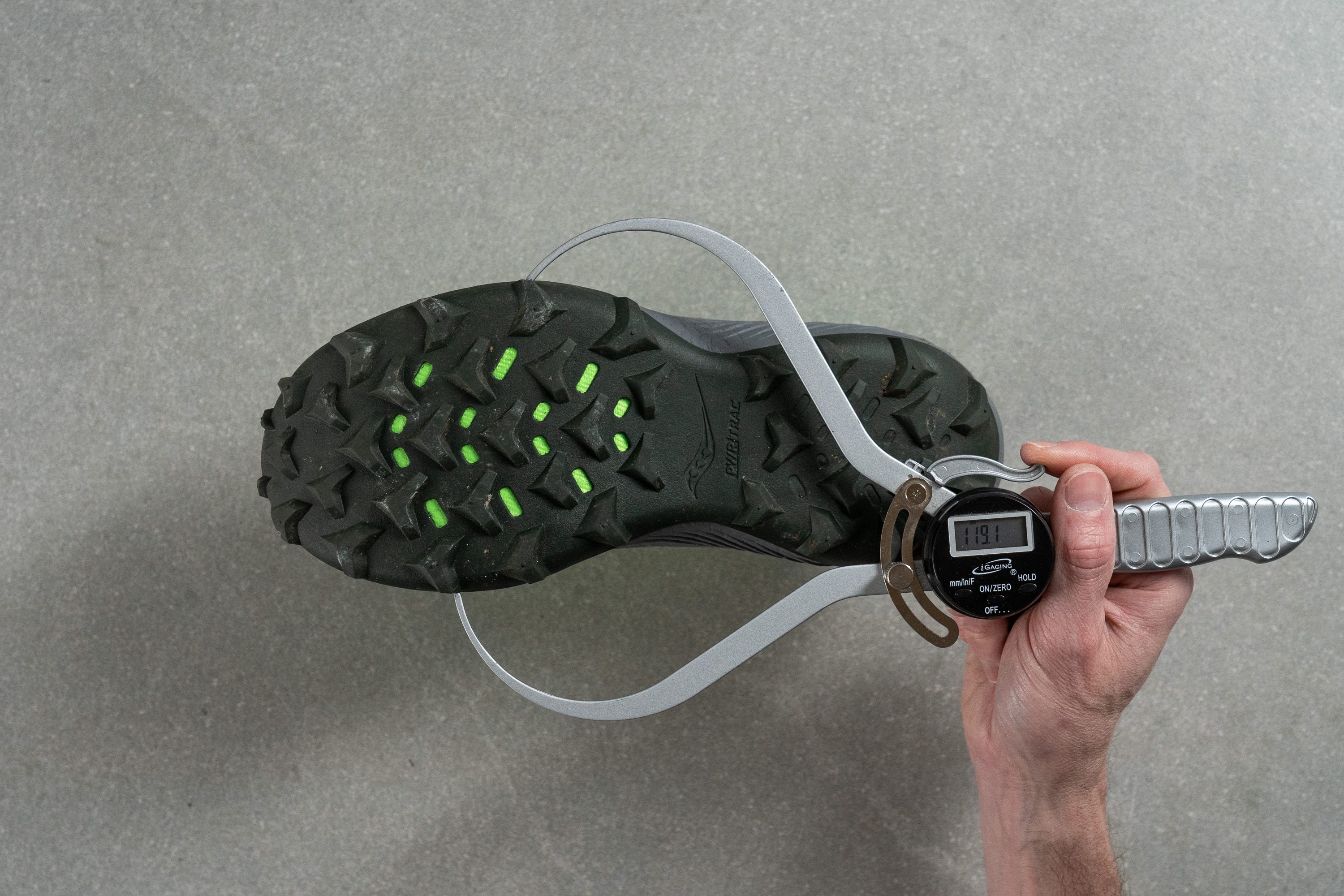
| Endorphin Rift | 119.1 mm |
| Average | 112.8 mm |
Midsole width - heel
The heel, already boasting enough stability, didn't need to be extra wide in the design at just 91.6 mm. This allowed the shoe to save quite a bit of weight.
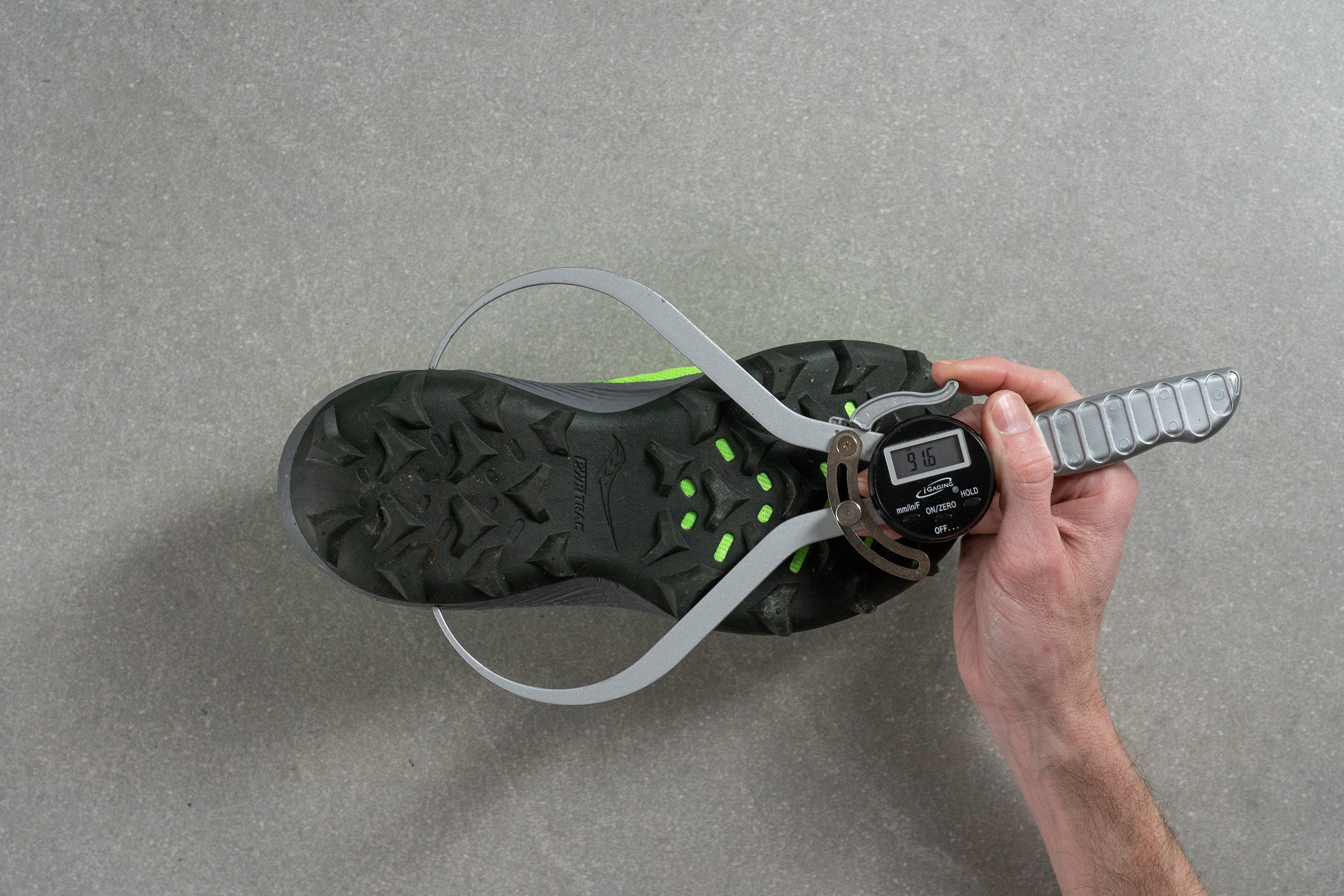
| Endorphin Rift | 91.6 mm |
| Average | 89.9 mm |
Durability
Toebox durability
One of the standout benefits of an upper like this is its impressive durability. Unlike shoes with larger holes, where damage tends to escalate quickly, the Rift resisted admirably.
We rigorously tested it with our Dremel, and remarkably, it exhibited minimal wear.
Interestingly, while the Dremel tore through the TPU-based protective layer, the damage significantly slowed once it reached the upper. This impressive resilience earned the Rift our seal of approval and a well-deserved 4 out of 5 rating.

| Endorphin Rift | 4 |
| Average | 3.1 |
Heel padding durability
The heel area is generously padded, ensuring a snug and secure fit, thanks to the top-notch fabric Saucony uses to cradle the foot. However, this kind of padding often leads to quicker wear and tear.
But the Rift once again shattered our expectations. It delivered another impressive performance against the Dremel, securing yet another well-earned 4 out of 5 rating!
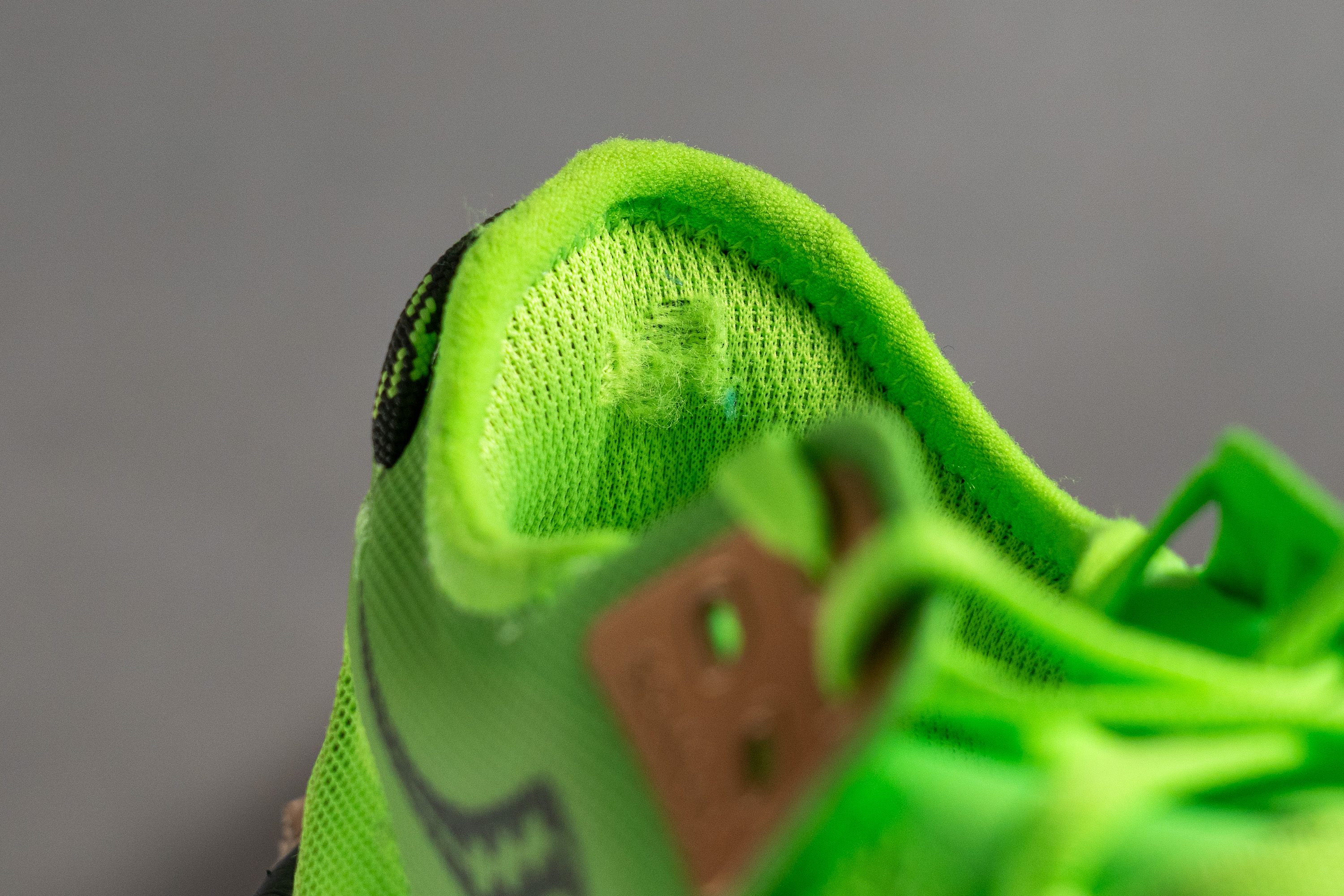
| Endorphin Rift | 4 |
| Average | 3 |
Outsole hardness
We were super excited about this Saucony, especially to test its outsole since it's a crucial part of any trail running shoe.
First up, we checked the hardness of the PWRTRAC rubber compound. On our Shore C durometer, it scored a 82.4 HC, landing it right around the average mark.

| Endorphin Rift | 82.4 HC |
| Average | 85.8 HC |
Outsole durability
With those hardness test results, we expected average durability. But the PWRTRAC outsole stunned us with its eye-popping performance. After the Dremel treatment—the same on every shoe we test—it showed just a 0.2-mm indentation.
This is one of the best scores we've seen in the lab. It makes this shoe a fantastic choice for any terrain, without worrying about it wearing out too soon.
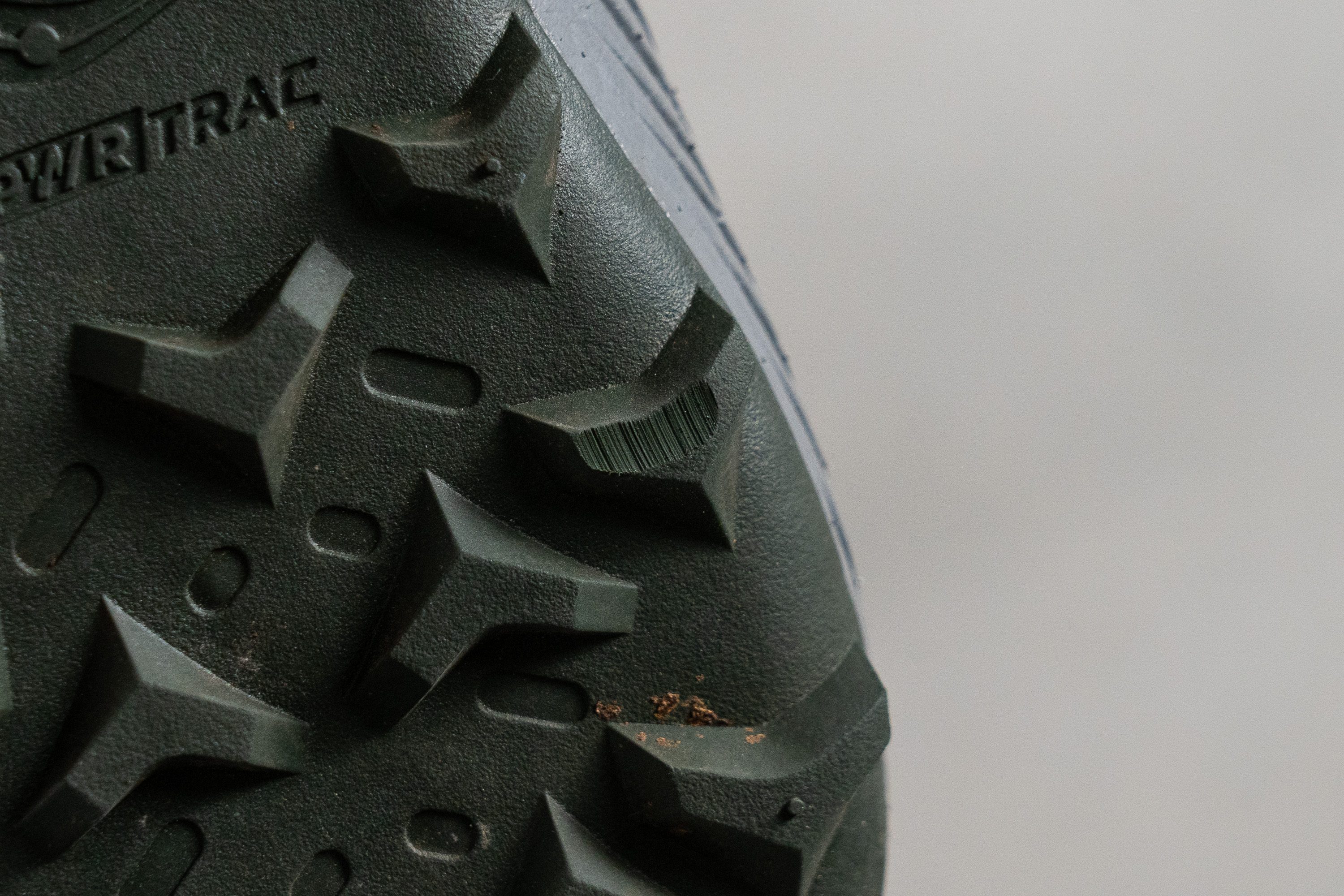
| Endorphin Rift | 0.2 mm |
| Average | 0.9 mm |
Outsole thickness
We mentioned earlier how light the Rift felt when we first unboxed them. Our measurement of the outsole at 1.2 mm confirmed they really went all-out to make this shoe featherlight.

And we think it's the right approach for this particular shoe. Why add 2 or 3 mm to the outsole, plus lugs? That would only mute the ride and add too much weight, the exact opposite of what this shoe aims to achieve!
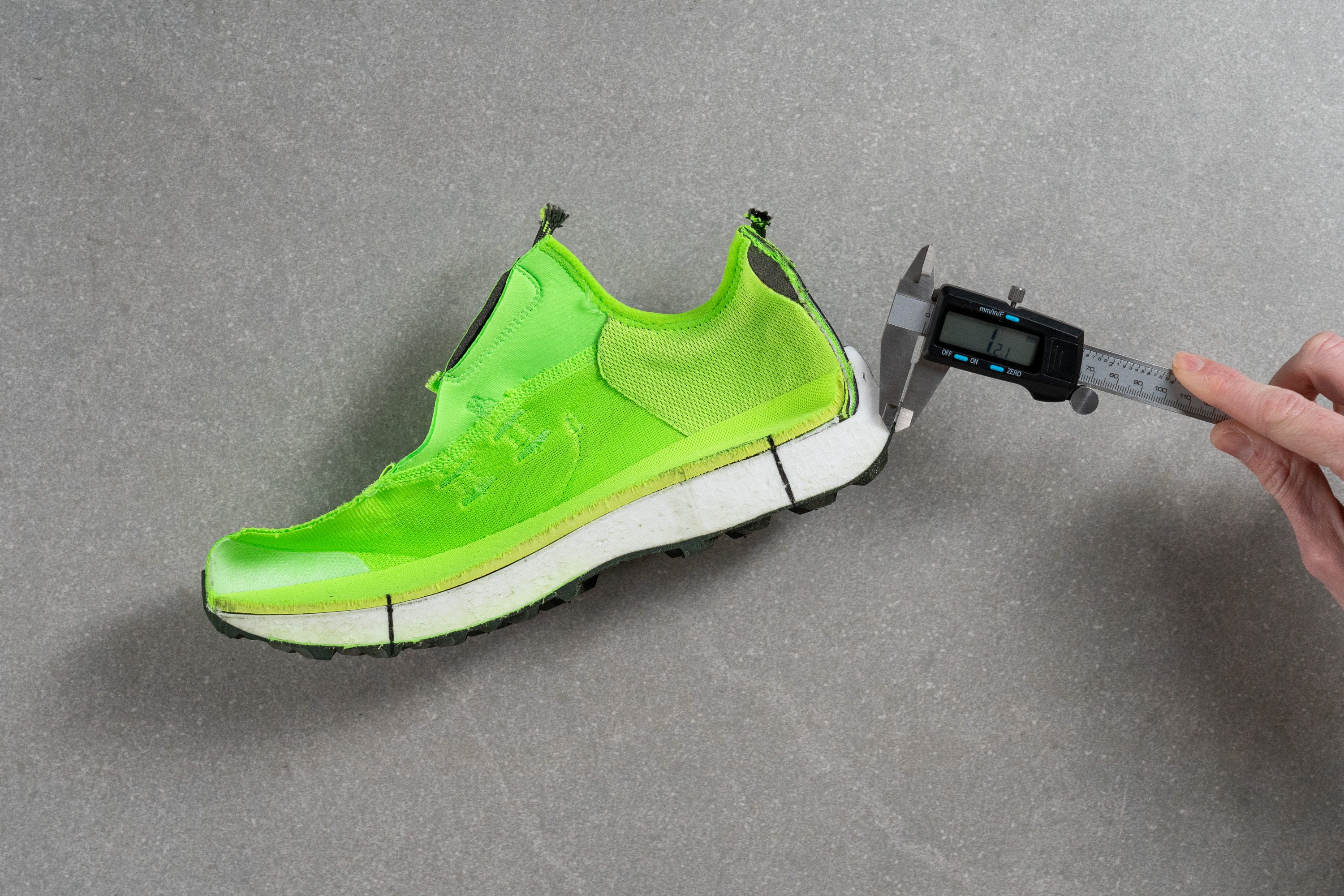
| Endorphin Rift | 1.2 mm |
| Average | 2.2 mm |
Misc
Insole thickness
The insole thickness is pretty average at 4.5 mm, so it'll feel similar to most other shoes out there.
Like we always say, the best thing you can say about an insole is nothing at all!

| Endorphin Rift | 4.5 mm |
| Average | 4.7 mm |
Removable insole
The insole isn't Ortholite and doesn't offer anything special besides a mention of Saucony's Speedroll technology, so you can easily replace it with another one.
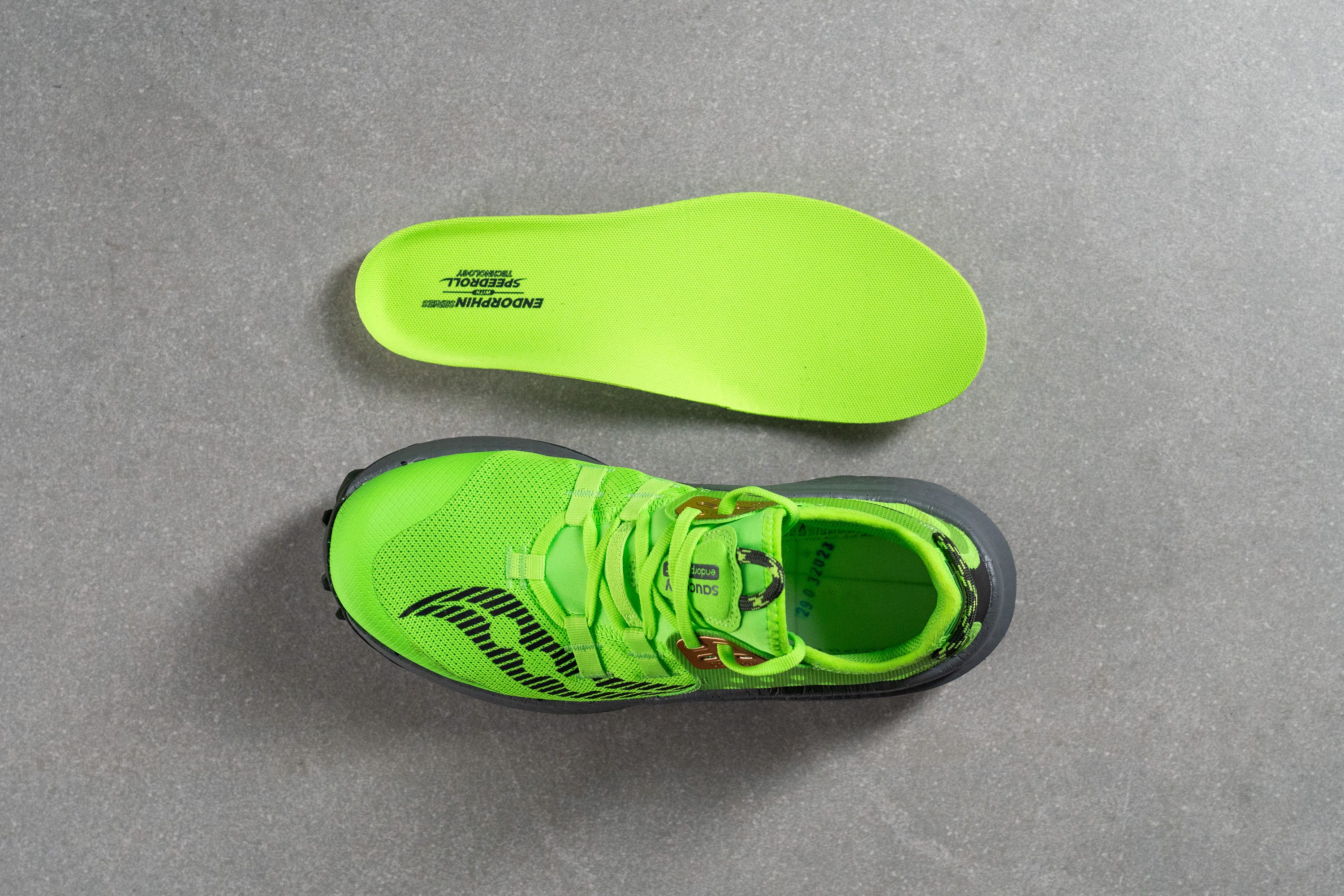
| Endorphin Rift | Yes |
Midsole softness in cold (%)
One of the major advantages of Pebax foams is their consistent performance—they never turn too firm in cold temperatures.
The PWRRUN PB stays true to this rule, impressively becoming only 10.8% firmer after 20 minutes in our freezer.

| Endorphin Rift | 11% |
| Average | 26% |
Reflective elements
Regrettably, the Rift lacks any reflective elements. Considering its £170 price tag and its design for adventure, we believe it should definitely include at least a few.
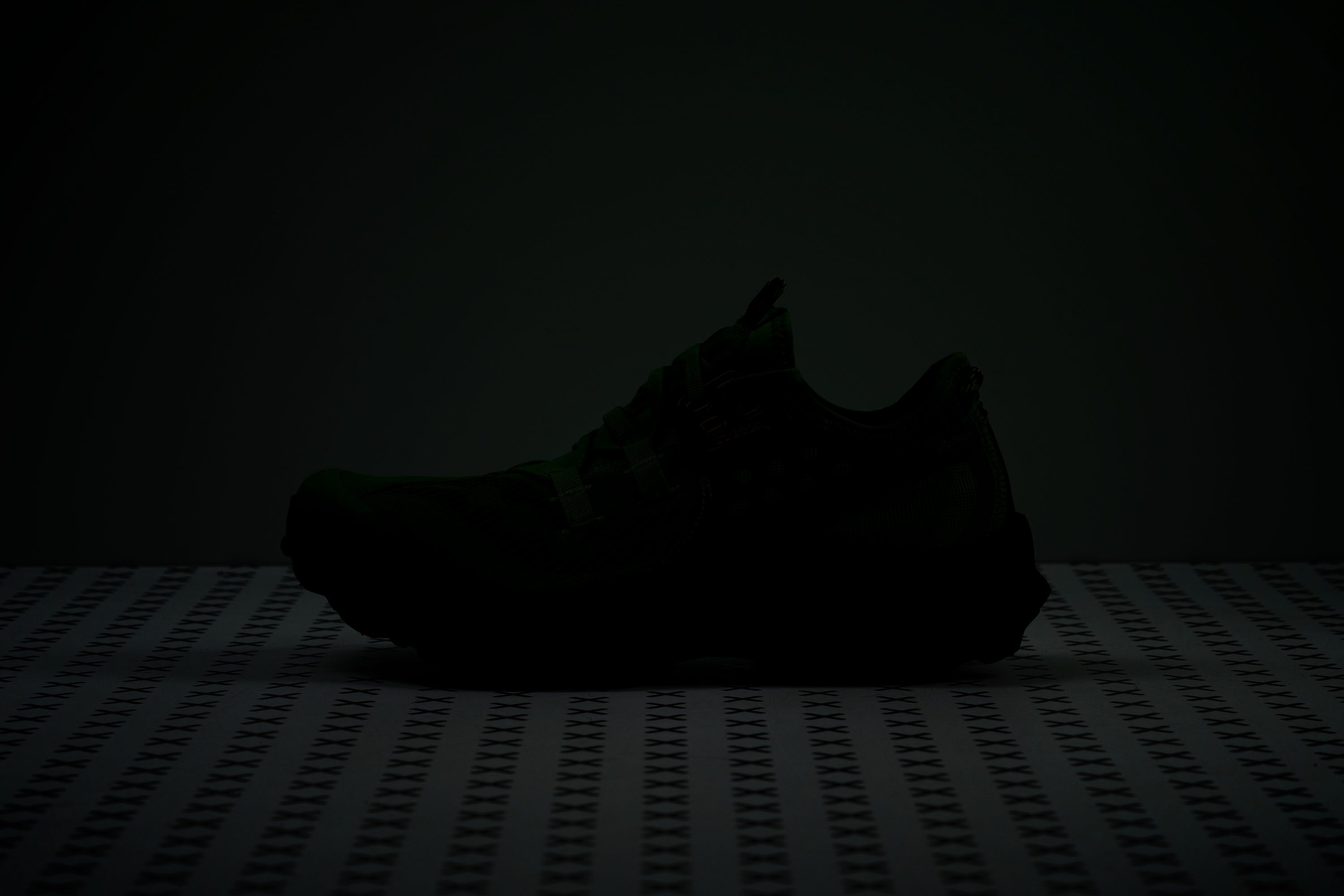
| Endorphin Rift | No |
Tongue padding
Saucony's commitment to keeping the Rift lightweight is a key selling point, but adding a bit more weight for a well-padded tongue would have greatly improved comfort for longer distances.
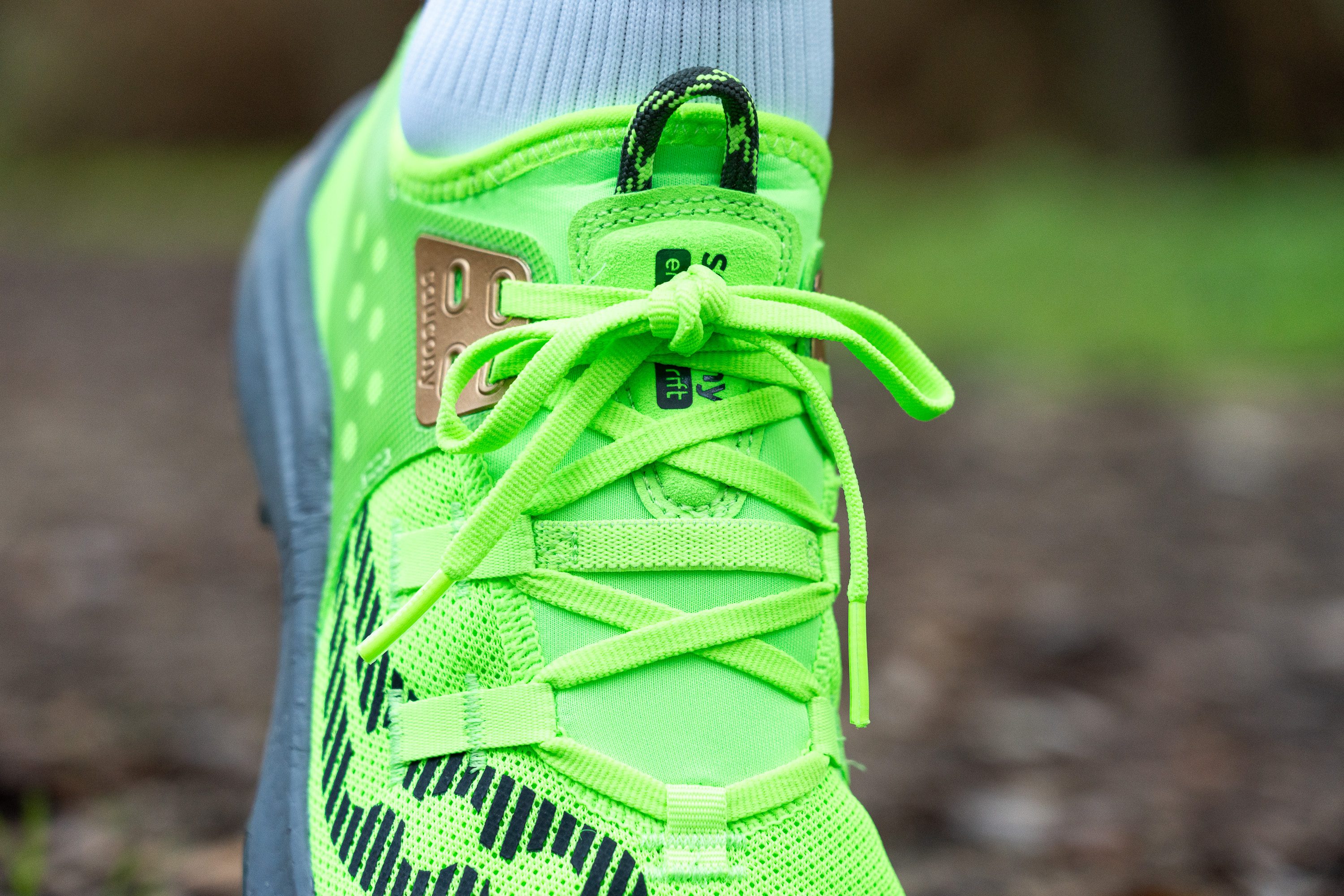
What Saucony cleverly did to minimise weight was to include a small padded area where the shoe is meant to be tied—the only padded part. The rest of the tongue is incredibly thin, just 1.5 mm thick.
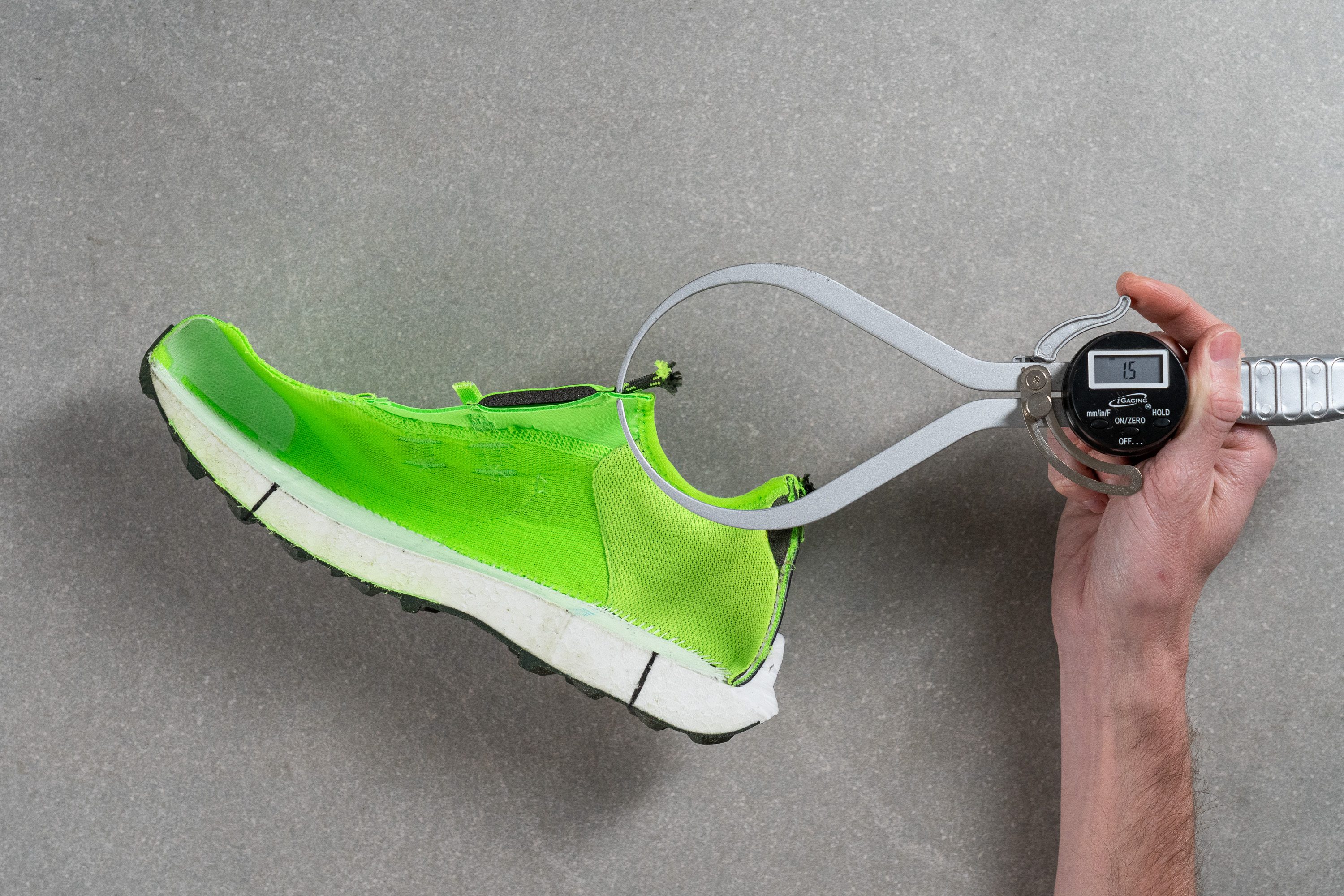
| Endorphin Rift | 1.5 mm |
| Average | 6.4 mm |
Tongue: gusset type
The shoe's tongue is sewn to the sides, creating a sock-like fit. While some runners may not be fans of this design, we think it's great for trail shoes.
It ensures that debris and small rocks won't get into the shoe and spoil your run.
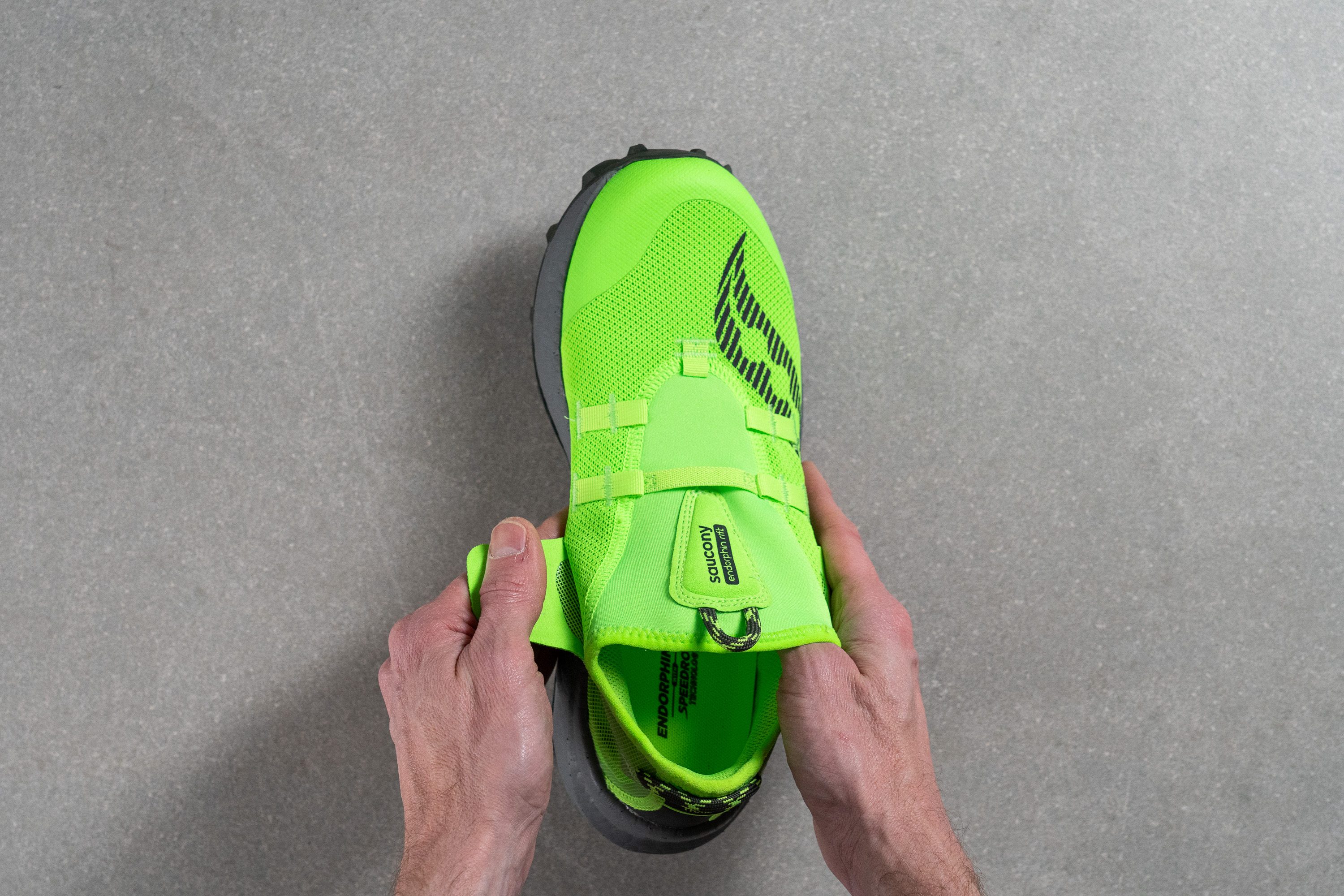
| Endorphin Rift | Sock like |
Heel tab
In addition to the finger-loop pull tab on the tongue, there's another one on the Rift, located at the heel.
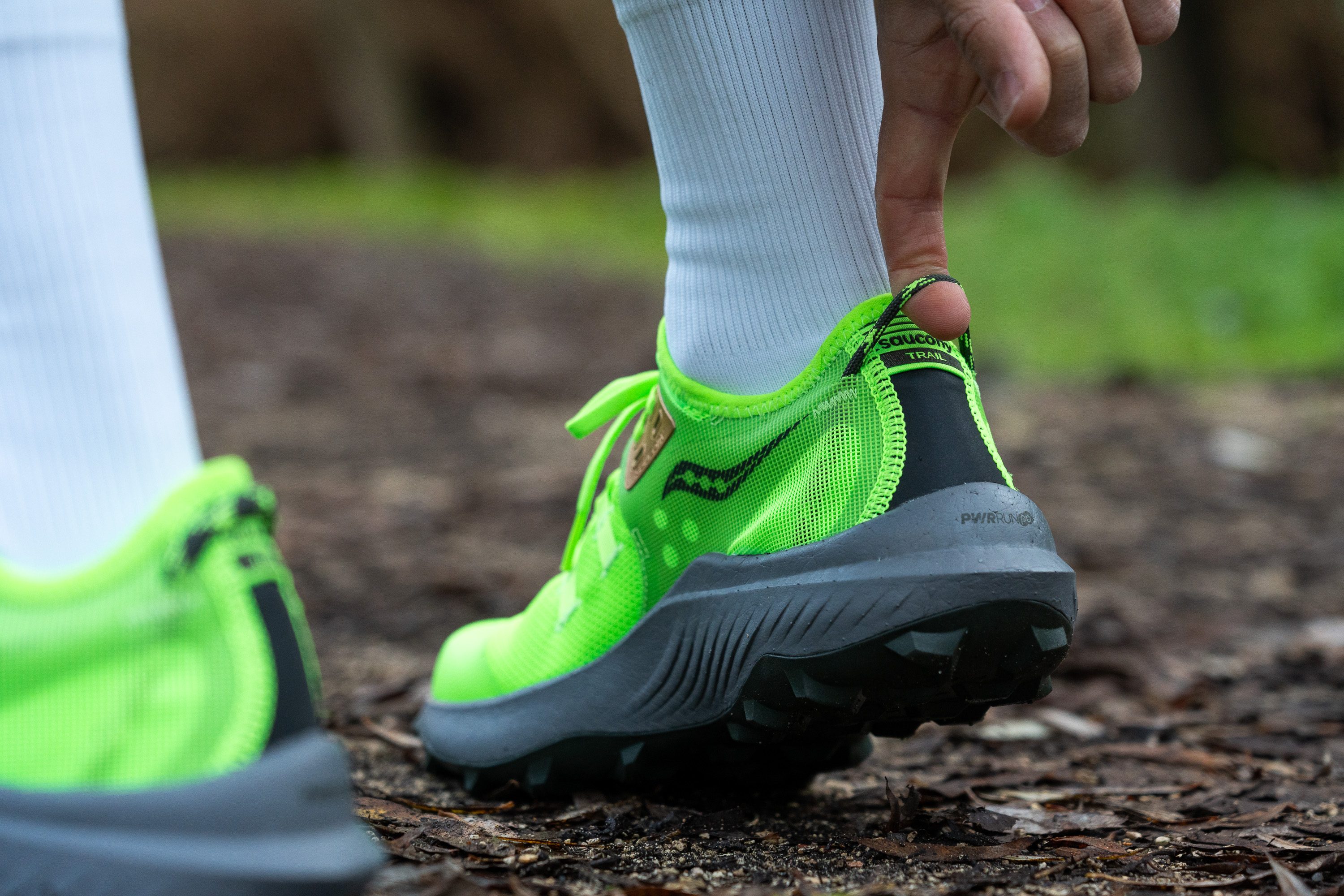
| Endorphin Rift | Finger loop |

